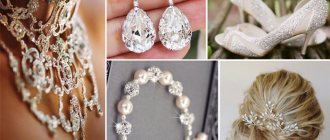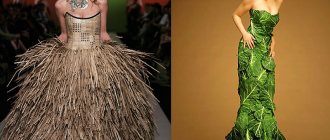Historical facts
A Japanese wedding in the 12th century was not the same as it is now. The Japanese were polygamous and had several wives. At the same time, the spouses did not move to live with their husbands, but he visited them when he considered it necessary. Only with the advent of the samurai did men begin to choose only one wife. But here we are not talking about love, since marriages were most often carried out to consolidate family and other ties. Usually the wife was chosen by the parents. There were cases when future family unions were agreed upon immediately after the birth of children. It wasn't until the 20th century that Japanese people were allowed to marry for love.
Today, the average age of Japanese people getting married reaches 30 years, since only at this point does material well-being appear. In addition, sometimes it is difficult to prepare the relevant documents, which also scares off future newlyweds.
Just like in the old days, today's traditional Japanese weddings are held either in the spring, during the cherry blossom season, or in the summer. In autumn and winter, the bride and groom prepare for the upcoming celebration.
Kimono came to Japan from China
Despite the technological breakthrough that Japan made in the second half of the 20th century, for a long time this country remained in the shadow of its mega-neighbor, China.
Almost all achievements of progress, including kimonos, were adopted by the Japanese from the Chinese - in particular, kimonos were originally worn in China as underwear.
Initially, there was no difference between men's and women's kimonos, and even today kimonos are not only women's clothing; men's kimonos are sewn from plain, muted fabrics and worn without additional accessories.
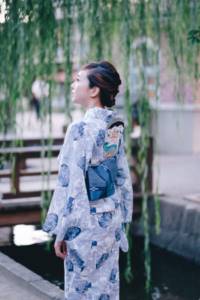
Engagement
When getting engaged, gifts play a very important role. The bride receives 7 envelopes as a gift from the groom and his family, one of which contains money for organizing the celebration. In ancient times, the remaining envelopes were filled with ritual products, but today this tradition is not observed.
In modern Japan, this ritual is replaced by a European one - presenting the bride with a ring with a diamond or stone that corresponds to the girl’s zodiac sign. The future wife gives the groom gifts in the form of things.
Preparations for a Japanese wedding begin from the moment of engagement and last six months. During this time, a guest list is drawn up, a restaurant is ordered, a menu is selected and, of course, costumes for the newlyweds are purchased. Invitations must be sent 1-2 months before the celebration, since each person who receives it must have time to think about the offer and send an affirmative or negative response. Wedding expenses are traditionally borne by the groom's family.
Modern period
Nowadays, kimonos are usually worn only on formal occasions and usually only by girls. Older women (and some men) wear traditional Japanese clothing on a daily basis. Professional sumo wrestlers also wear kimonos every day. In public outside the ring they are required to wear it. Kimonos are also worn for tea ceremonies, weddings, various sports competitions (kendo, etc.), New Year, seeing off the dead, national holidays, graduation from a university or school, etc. By the way, for a foreign tourist with a camera it is considered great luck to meet street Japanese woman in a kimono.
In the Land of the Rising Sun there are a lot of “kimonomaniacs” who love to wear traditional clothes and attend courses where they are taught how to do it correctly. The classes cover in detail the history of its origin, choosing appropriate clothing for the upcoming event and season, methods of tying obi, fabrics and much more.
We can admire everything Japanese that has come into fashion now, but I clearly remember my first childhood impression of a kimono
, seen in some picture: “What is this ridiculous thing?!”
Agree, to us, Europeans, such a silhouette seems very unusual and even wrong: the breasts (already absent in Japanese women) are tightened with a high wide obi belt, there is no waist, the figure is made rectangular and even shorter than what Mother Nature gave to the Japanese women. Once I went to an exhibition, and the lady who was selling kimonos for photo shoots for money shared that when our girls put them on, they all strive to tighten their waists with a belt and let out their powerful breasts, but this is not Japanese!
Since ancient times, a woman’s appearance has been valued as childlike and doll-like (who said that kawaii is a modern fashion?!). A tiny foot was considered beautiful, which is why the foot was mercilessly deformed with special pads from infancy. True, legs were almost not needed: walking was not supposed to happen at all; all ancient Japanese images show ladies relaxing among bubbling multi-layered clothes in the deepest melancholy.
Large breasts were considered vulgar and unattractive. The ideal face should have been porcelain-white, round, with a tiny mouth and nose, and short eyebrows raised high; therefore, eyebrows were shaved off and “extra” ones were drawn high on the forehead. Intricate hairstyles came into fashion relatively recently, in the 18th–19th centuries; previously, ladies wore their hair loose.
The kimono did not immediately take on its current form. Now there are mandatory requirements for the cut, the method of putting it on, and the method of wearing it, but the current kimono is largely schematic and stylized. Typically, putting on a kimono and wrapping the obi takes quite a long time and requires additional help. However, there are craftsmen who can do everything on their own, quickly and deftly. All kimonos are the same size and style, and are regulated by the degree of tucking of the folds of the clothing.
Nowadays, kimonos are worn less and less: usually on holidays and special occasions. True, sometimes they wear it for a walk. For geishas and maikos, who are still quite popular, the kimono is work wear. They also wear traditional hairstyles. A good kimono is very expensive: it can cost several thousand dollars (yen equivalent).
Where did the kimono come from?
The indigenous population of Japan, the ancient Ainu, wore a T-shaped robe, simple and rather short. It was comfortable and did not restrict movement. The ancient Japanese, having moved to the islands from the Korean Peninsula, partially adopted the traditions of the Ainu. The Chinese Hanfu robe also had an influence. Over the centuries of its existence, kimonos have lost some details and acquired others, depending on fashion and popular trends.
By the way, a kimono is not only what we see. The “outer” clothing hides the lower one; under it are thin cotton trousers - sasoyoke and something like a T-shirt - hadajuban. A thin obi-ita board is often placed under the obi; it holds the shape of the belt. Folds are formed using ribbons - hosihimo. And, of course, shoes - regular geta sandals or high okobos. Socks with a separate thumb are worn under them - tabi.
Previously, there were different classifications of kimonos: men's, women's and children's. And also according to the season, age and marital status (for girls - furisode, with long sleeves, for married people - tomesode, with shorter sleeves, so as not to interfere with the kitchen). There were kimonos for special holidays and ceremonies, and, of course, it was important to “get into the season.”
Once upon a time there were at least 2 seasons per month associated with the flowering of a particular plant. That is, within a year the fashionista had to have 24 kimonos! It was customary to wear a kimono with a plant when it was just beginning to bloom, “in the bud stage.” Flowering had to be “prepared”, and at the end, the next kimono had to be put on, otherwise it was already “old fashion”. In modern times, even for geishas, such a tradition is an exorbitant extravagance. It is believed that a high-level geisha should have at least 10 weekend kimonos.
Nowadays the requirements are not so strict, since young Japanese women have few reasons to wear such clothes - usually these are the most important family holidays; Therefore, I wore what I liked.
Let's now see what types of kimono there are:
Tomesode (黒留袖)
− official kimono of a married woman. Usually the ornament is located along the hem, below the waist. The sleeves are shorter than those of “girls’” kimonos. Has two varieties:
1. kurotomesode
- this is the most official subspecies. The attire of married women for the most special events, for example, the wedding of a daughter. Black, with an ornament only along the hem. The white spots on the shelves on top are kamon coats of arms, a tradition from the past, there should be five of them.
2. irotomesode (色留袖)
− festive, but less formal outfit of a married lady, a type of tomesode. There is an ornament at the hem, but the colors are not necessarily dark.
Iromuji (色無地)
− dress for tea ceremonies. Plain, delicate colors.
Komon (小紋)
- a small pattern that completely covers the fabric. Designed for walking.
Furisode (振袖)
– (literally “developing sleeve”) kimono for unmarried girls.
Susohiki (裾引き)
− kimono for geishas and traditional dance performers. It is distinguished by the presence of a train. Hair decoration imitating hanging clusters of wisteria is an attribute of maiko apprentices, future geishas.
Many couples want to make their wedding special, unusual and extraordinary, so they organize a themed celebration. Choosing a Japanese style of celebration guarantees that it will be original and bright. But for this, the bride and groom need to think through everything thoroughly in advance, prepare a lot of accessories, and choose the bride’s outfit according to the theme of the holiday. What types of Japanese wedding dresses are there? What to look for when choosing clothes for a bride in the style of the land of the rising sun?
Suits
Dresses for a traditional Japanese wedding are usually very expensive, as the fabric is made and decorated by hand. For this reason, wedding attire can be rented in almost any city in the country. On the wedding day, specially invited women give the bride a classic hairstyle and makeup. To do this, use powder to “whiten” the face to a light pearl shade, then apply blush, lipstick, and mascara. The traditional headdress of the bride is a cocoon made of white light fabric.
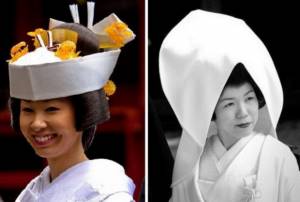
The kimono and tsunokakushi (headdress) are used primarily for marriage ceremonies. After this, the bride can change into a classic European wedding dress and put on a veil.
The man at the official part is dressed in a kimono with family coats of arms. After which he also changes into a classic black suit.
At a wedding ceremony, which follows all traditions, the bride can change the official women's kimono to a colored one. This symbolizes that she has become a wife. Just as in European countries wedding dresses are used only once, so in Japan this kimono is no longer worn after the wedding.
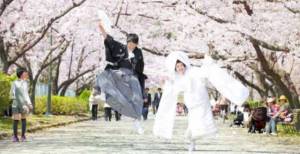
Integral parts of the image
Purely traditional accessories
In order for the image of a Japanese bride to be complete, it is necessary to complement it with purely Japanese accessories. These include:
- An umbrella is a traditional and very ancient attribute that came from India. Symbolizing protection from all evil, the umbrella has become an integral part of Japanese culture and, moreover, protection from the sun's rays, because pale skin is the standard of Japanese beauty. In a variety of colors, depending on the outfit, the umbrella will decorate any lady, adding national identity to the image.
- Fan. Saying Japan or China, the first thing that comes to mind is a fan. Initially, it appeared in Japanese culture due to the need to cover the face. After all, by leaving it open, it was believed that the woman was exposing herself and her name. Waving a fan brings happiness with clean air. In addition to its symbolic meaning, it is simply a very stylish thing that adds mystery and playfulness.
- Shoes can be either national: such as geta (sandals with wooden and flat soles) or zori (sandals with a thick heel (a type of heel)), or modern high-heeled shoes.
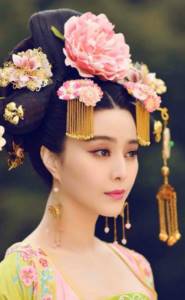
Familiar accessories
- Bouquet. If a Japanese woman decided to hold a bouquet in her hands instead of a fan, what flowers do you think it should be made of? Well, of course, Sakura, what else. Alternatively, replace the sakura with orchids, lilies or roses.
- Hairstyle. Japanese brides often wear a headdress that hides the horns of jealousy. Yes, it sounds funny, but according to the Japanese worldview, every girl has them, and she must cover her horns with a rather large round hat. Hmmm, so many nations, so many strange beliefs. As for the hair specifically, it must be carefully collected in different compositions; smooth wigs with a bob hairstyle are often used. You can use fresh flowers, beautiful combs, hairpins, etc. as decorations.
- Makeup is something that you need to be especially careful about. Without Japanese touches you won't get the look you want. The basics of Japanese makeup are whitewash and bright lipstick, emphasized eyes, a small mouth on a pale background. This is how female beauty is perceived in Japan.
When choosing this option for a wedding dress, you need to be extremely careful so as not to become a European in an eclectic outfit.
That's all I wanted to tell you about the exotic type of wedding attire. I wish you to be as sophisticated and gentle as Japanese beauties. Well, don’t forget to subscribe to new interesting topics on my blog and share them with your friends. Bye!
If you find an error, please select a piece of text and press Ctrl+Enter.
Guest costumes
For a Japanese-style wedding, it is customary for men to wear a formal black suit and a white long-sleeve shirt. Women wear knee-length evening or cocktail dresses. It is customary for both men and women to wear Japanese kimonos to a traditional wedding. After the ceremony, guests are allowed to change into more informal attire.
There is also a ban on black clothing for women at weddings, as it is the color of mourning. Dresses that expose the shoulders are also considered indecent.
LiveInternetLiveInternet
I really like national clothes. Both ours and several other places on Earth where I lived in this life, or others…. So I decided to tell you a little about it. I'll start with the kimono.
One of the symbols of Japan is the kimono - a traditional, loose-fitting garment resembling a robe with long sleeves, which takes 9 meters of fabric to make . Kimono 着物(literally, “something that everyone wears” in Japanese) is a traditional item of clothing in Japan. Kimono was originally a word for all clothing, but eventually came to refer to a specific type of long "robe" and is now used in the wardrobe of women, men and children. The history of kimono goes back more than a thousand years, isn’t that quite a long period? Its modern appearance began to take shape during the Heian period (Heian 794 - 1192). Since then, the basic design of men's and women's kimonos has remained virtually unchanged: a “straight” robe that flows to the ankles, with a V-shaped collar and fitted sleeves that reach to the wrist. The kimono is always wrapped around the body from left to right and is tied with a wide belt called an obi, which is secured at the back.
Every year in Japan, two major holidays are celebrated, the main participants of which are children: Girls' Day on the third of March and Boys' Day on the fifth of May. Young Japanese people put on festive national clothes for the first time in their lives. For most, this event may be the only time they can wear a kimono - in modern Japan, elegant traditional clothing has long been a luxury item. In 1786, in the St. Petersburg magazine “A Cure for Boredom and Worries,” an unknown author published a story about the Japanese national costume: “Their first dandy consists of long and wide robes, which they, without distinction of gender, suddenly put on several at a time; nobles and rich people wear silk, and others wear paper.” Thus, the Russian reading public was able to become acquainted with Japanese traditional clothing, although its name, kimono, was not yet known in European countries and the word robe, which was used to describe the attire of many peoples of the East, was used in the description. No wonder. In Japan itself, the word “kimono” became widespread, according to experts, only from the beginning of the 17th century, although clothes of this cut were known already in the 7th century.
The name "kimono" comes from the expression kiru-mono - a thing or garment to be worn. Already in the 18th century, they correctly noticed the main property of the kimono - versatility. Indeed, it was worn by men and women, old people and children, poor and rich. The differences were not in the cut, but in the quality of the fabric and the nature of the ornamentation. To make a kimono, a piece of fabric was needed up to 11 meters long and no more than 45 centimeters wide. These dimensions were determined by the working surface of the ancient loom on which the material for national clothing was produced. These dimensions became a module, a kind of starting point when designing the main element of a Japanese costume. Men's clothing also included other elements. On top of an elegant kimono, men also wore a pleated skirt-pants - hakama and some kind of vest - katagina. The cloth intended for the kimono was divided into several unequal parts. Two rectangular pieces of the same size were folded in half - this was the main volume, and it was sewn only from the back and sides. Two smaller, but also equal fragments formed sleeves after they were folded in half and sewn so that there was a hole for the hand on one side, and sewn to the main volume of the kimono on the other. At the same time, there was a hole left inside the bag sleeve - small for men's kimonos and large for women's, which was used as a pocket for small items: scarves, cosmetics and smoking accessories. A small narrow piece of fabric, folded in half, served as a collar - eri - and was sewn along the edge of the kimono so that at the back it did not touch the neck, but framed the front flaps at the front, reaching the waist. A kimono sewn in this way was always larger than a human figure. After all, these clothes were not chosen according to size, like a European dress, but were examined like a painting, admiring the ornaments, pictorial compositions, embroidery, painting or appliqué. To fit a kimono to a figure, it was draped as follows: the floors were tightly draped from left to right by both men and women, then the clothes were gathered into a wide fold of the required length. This fold was secured with a system of ribbons, and a belt was tied on top - obi . It was made from rigid fabrics in order to keep the shape of the decorative knot placed on the back. For greater rigidity, pads were inserted into the belt at the front and back. By the way the obi was tied, one could distinguish a samurai from a commoner, a poor shopkeeper from a rich merchant, a nobleman’s daughter from a wealthy city woman. The kimono sleeve always reaches the wrist. Therefore, the concept of long or short sleeves in Japanese clothing does not correspond to European ideas. Everything is determined by how much excess fabric, not sewn to the main body of the kimono, hangs from the lowered arm. In this sense, a man's kimono always has short sleeves - kosode, and a girl's kimono with long sleeves - furisode. The furisode sleeve shape was invented by the actor Mizuki Tatsunosuke (1668-1704), who performed the roles of young women in the Kabuki theater. He was a fairly tall man, and in order to hide his height, he increased the length of his sleeves and lowered the ends of his belt almost to the ground. Since then, such hanging sleeves began to signify young age not only on stage, but also in life. As soon as a woman got married and had children, custom required shortening her sleeves somewhat. Such kimonos were called tsusode. For home, everyday kimonos, fabrics without ornaments with simple geometric or floral patterns in one or two colors were used. But even in this case, when connecting individual pieces of material, they considered first of all the ornament, striving for a coherent composition. Elegant, festive kimonos were decorated after they were sewn. The artist who painted a kimono, or the embroiderer who covered it with fancy flowers and birds made of silk, did not take into account the seams or the construction of the clothing. Separate parts of the composition moved from the sleeve to the floors, from the back to the chest, from the inner surface to the front side. It was possible to discern the details of the composition by viewing the clothing as a work of painting. After the kimono was draped on a person, individual details were hidden in a wide fold or covered with an obi belt. The peculiarity of decorating clothes in this way was dictated by the artistic system of Japanese culture, the lack of façade perception of any object - be it a human figure, a painted lacquer box for writing instruments or gifts.
The appearance of a person was intended to play a certain role in the aesthetic system. Let's imagine the inside of a traditional Japanese house, in which light enters only through the lower part of the paper walls. To better protect them from bad weather, the roof of the house was carried far above the ground. The most illuminated surface was the floor. There is no furniture in the European sense in the Japanese interior - there are no high tables and chairs that raise a person to the level of the windows. In the almost empty room, everything is painted in similar colors - yellowish-green tatami mats cover the floor; the paper of the walls, oiled for greater transparency, acquires a yellowish tint; visible from the inside, the supports of the house and the roof rafters have the natural color of wood. In such a close range, a human figure in a bright kimono clearly stands out. The rectangles of the mats and the frames of the walls and windows obey a straight line, and the human silhouette with a complex hairstyle and an intricate bow-knot on the belt contrasts with the surrounding space and catches the eye. Complex landscape, genre and ornamental compositions on a kimono seem fragmented after this clothing finds its owner, but they are complemented and balanced by decorative techniques that are used to decorate objects with which a person comes into contact. The same flowers, birds, butterflies and dragonflies, patterns imitating fish scales or honeycombs can be seen on kimonos and on lacquer paintings of household utensils.
The same artistic principles form the basis for the design of a person’s clothing and his home - contrast in the use of materials and asymmetry as the main decorative principle . New Year's kimonos are covered with ornaments - good wishes for longevity, perseverance, wealth, personified by a turtle, crane, bamboo, and peony flowers. The carp symbolizes perseverance, courage and loyalty - that’s why on Boys’ Day an image of this fish is hung above every house. There are as many carps placed above the roof as there are sons in the house. The same ornamental signs can be seen on all things that surround a person. Most often these are images inspired by nature. But you can also guess the motives associated with ancient legends, famous works of art and literature. Thus, waves in the style of the famous artist Utamaro (1754-1806) are found not only on screens or lacquer products, but also on woven ornaments and in painting on kimonos. Having mastered the artistic language of their people from childhood, the Japanese easily master it and carefully pass on national traditions from generation to generation. The principles of kimono design developed in the 17th-18th centuries, but modern artists create true masterpieces based on old ornamental motifs, themes and compositions.
When tying a bow, the only decoration of a woman’s costume, all soul and love are put into this procedure. The poetic anthology “Man'yoshu” contains a large number of poems in which the belt and the customs associated with it are mentioned in one way or another, which clearly shows the deep meaning that the Japanese attach to this part of the costume. The word “wedding” in Japanese means “tied together,” and the Chinese character for “to tie” also means “to give life to the human soul.”
Most of the kimono designs were taken from traditional themes of the four seasons, which were widespread in painting. Therefore, the beauty of clothing was inextricably linked with the beauty of nature. The design and color of the kimono and all its accessories, including the belt, should reflect the season of the year and thereby be in harmony with the surrounding nature. When choosing a kimono, women always choose an ornament that matches the season, thanks to this they are more sensitive to the slightest changes occurring around them. The same rules apply to men's suits, with the only difference being that men do not need to pay attention to the patterns, because... they usually don't exist. On the other hand, the Japanese suit is completely adapted to local climatic conditions on a practical and functional level, so it can be confidently called the perfect combination of form and purpose. A feeling of harmony and unity with nature penetrates the human soul, and the thought of destruction leaves him. Thus, the national costume plays an important role in the life of Japanese society, especially as a means of educating the younger generation. Over time, new aspects appeared in the perception of clothing by the Japanese, which is why it acquired more and more new functions. In the middle of the twentieth century. a philosophy of costume emerged, clearly formulated in the theory of Yamanaka Norio. According to this theory, the kimono really appears as clothing that can bring harmony to a person’s soul and to his relationships with others. Maybe this is why young people do not completely abandon the national costume and are happy to wear it on holidays?
Women's kimono - has only one size. The sleeves and flaps are rolled up to accommodate women of different body types, but in modern Japan both men's and women's kimonos are available in a variety of sizes. Most women would probably not be able to put on a kimono without assistance, since the set consists of twelve separate pieces that must be carefully selected and adjusted in accordance with centuries-old tradition. Men's kimonos are much simpler, consisting of a maximum of five pieces. For this reason, there is a need for professional dressers who are hired on special occasions to help women dress properly. Very tall or heavy people, such as sumo wrestlers, have kimonos made to order. By the way, sumo wrestlers are prohibited from appearing in public in other clothes. In the not-too-distant past, cleaning and washing required the kimono to be ripped apart and then re-stitched for wearing. New methods of cleaning fabric have greatly simplified the entire process, saving the owners of national clothing from a rather troublesome procedure. Long and loose stitches are often sewn around the outer edges of the fabric. They help prevent folding, wrinkling, and keep the kimono layers straight, making storage incredibly easy. Over a long period of time, the color scheme, type of fabric and style changed within wide limits, limited only by the imagination of the clothing customer and the tailor.
There are many styles of kimono to suit all occasions, from prim formal to casual. The classic women's kimono is determined mainly by the shape (length of the sleeves), the pattern of the fabric and the color. Men's kimono is primarily one basic form of discreet colors. The formality of a kimono is primarily determined by the type and color of the accessories, the fabric used, and the number of special signs (family crosses). Silk is the most commonly used fabric for kimonos, although cotton is often used. Nowadays, there are also kimonos made entirely from synthetic fabrics, but these are rather exotic. The kimono is sewn from a single cut, its dimensions are strictly defined and all the fabric is used in the process. This is one of the reasons why larger kimonos are difficult to find and very expensive to make. Kimonos are generally expensive. They are embroidered by hand, and the fabrics are also often handmade. A simple women's kimono can easily cost over $10,000, while a full gown with formal decorations often exceeds $20,000. However, people keen on observing ancient traditions manage to get by with less “sounding” amounts, often making kimonos themselves. An old kimono is never thrown away. A kimono for children is sewn from it, or the fabric is used to repair another similar kimono; Large lengths of fabric are used to make various accessories for ceremonies. The kimono in modern Japan has lost its status as everyday wear and is used only on special occasions, mainly by women. Men wear it most often at tea ceremonies, weddings and national sports competitions (kendo). And although progress and unification are surely marching across the planet, there are many people for whom the art of kimono has turned into an entertaining hobby. In Japan, there are many courses that study the history of the kimono, as well as teach the skills of selecting patterns and fabrics for each ceremony and season of the year, accessories, and underwear items.
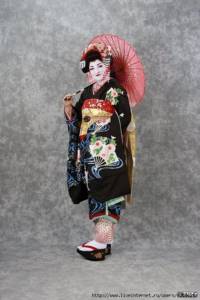
Geisha and maiko kimonos differ from ordinary kimonos primarily in their length: from 190 cm or more. It lies beautifully on the floor, trailing the beauty like a train. Geisha kimono is short-sleeved; maiko, as befits girls, wears long sleeves. There are two main types of this kimono: hikizuri (“dancing kimono”) and susohiki (“skirt with a train”). Susohiki is even longer; there is a wide roll along its hem, emphasizing the beauty of the lines of the kimono. Susohiki can be both festive and everyday; the differences relate to the richness of the decoration and, of course, the price. It is these kimonos that cost about a thousand dollars, and especially talented ones cost much more. The design on the susohiki goes from the hem to the waist and above; such a significant space is an excellent field for the artist’s experiments. Many susokhiki are unique works of art that have museum value. This also determines the peculiarities of the geisha’s movements: they are extremely restrained, including in dance, so that guests can enjoy contemplating the painting of the kimono and, of course, the grace of the beauty’s manners. When geisha and maiko go out into the city, they pull up the hem of their long kimono, revealing a beautiful lower kimono - juban.
Homongi, tsukesage and iromuji are the festive kimono of both girls and married women. “ Homongi ” means “clothing for visiting”, this kimono is the richest in patterns. Sometimes one large drawing takes up the entire surface of the kimono, turning it into an authentic painting. This is the type of kimono that is most open to experimentation by artists. Homongas are worn for celebrations (except family ones). Tsukesage is less festive. Along the hem of this kimono there is a patterned ribbon or a series of decorative elements. Tsukesage has a pattern at the top - on the back of the right sleeve and right back and on the front of the left sleeve and left chest. On such a kimono, the designs are often far from the classical tradition. Tsukesage is an outfit for visiting the theater, exhibitions and similar exits. The colors of women's kimonos depend on taste, mood, time of year and the occasion for which it is worn, and of course, on material wealth. Most of the ornaments are taken from traditional scenes of the four seasons. The design on a kimono can tell a whole story, for example, the image of dancing or flying cranes is a message of good luck and long life. By drawing butterflies on fabric, the Japanese wish for happiness, and birds flocking to flowers gracefully hint at the intimacy of relationships. Cherry blossoms falling in spring symbolize the fragility and variability of life, while long-blooming chrysanthemums, on the contrary, symbolize longevity. At the beginning of the 17th century, the motif of blooming peonies, symbolizing a noble, noble, famous person, was popular. And only the kimono for the uchikake bride remains white. Before the wedding ceremony, the bride is always dressed in white clothes with woven images of cranes, symbols of happiness, or garlands of symbolic flowers.
Tomeseode is a married woman's kimono. The most solemn kimono with short sleeves, black, with a wide stripe of a pattern along the hem and five family coats of arms. The tomesode pattern is never higher than the waist. This type of kimono is worn for family formal occasions. The mothers of the bride and groom still always wear a tomeode to the wedding, even if it is done in a “European” way. Black tomesode is correctly called kuro-tomesode (or, for short, kurometsode). The colored tomesode is called “iro-tomesode”, it is less strict and solemn. Iro-tomesode can also be worn by an unmarried Japanese woman on particularly strict and special occasions. The tomesode from the 1930s has relatively long sleeves, both sides are painted, and the reverse side is often painted. The painting of “ryozuma” (ryozuma, “mirror”) is especially valued - the design is mirrored on both floors from the front and back, repeating four times. In the 70s, the sleeve of the tomesode (and other kimonos of married women) became shorter, the pattern runs as a ribbon from the left hem to the right, and the reverse is no longer decorated.
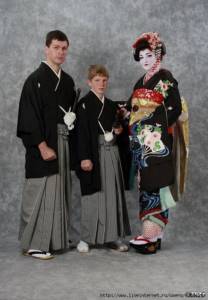
There are quite a lot of foreign kimono lovers - so much so that special large kimonos are sewn here for them, decorated not with pale blue stripes, as is customary among the Japanese, but with portraits of geishas, large open-legged hieroglyphs, images of playing cards and other local souvenirs. Such European kimonos are sold in just one Tokyo store - “Oriental Bazaar”, also designed for foreigners. And the word “kimono” itself immediately entered European languages. It’s easy to pronounce, and whichever “o” you emphasize, the first or the second, everything will be correct. This cannot be said about other Japanese words that denote the world-famous realities of this country, such as “sakura” or “samurai”. The word “kimono” is translated just as simply: “clothing”... The kimono has one significant drawback: it does not warm. And that’s why the Japanese themselves wear light “yukata” kimonos at home only in hot weather, but in winter they prefer warm sweaters and trousers: Japanese houses are poorly heated, and in winter there is no mention of “yukata” in them. It is mandatory to wear a kimono only on the first day of the New Year - gilded, festive - so that, according to custom, the whole family can visit the nearest Buddhist temple. Each holiday deserves a kimono of a special shade; New Year's - delights the eye with an abundance of red color. Fathers of families walk along the paths of the temple park, dressed in identical dull blue kimonos, similar in color to office robes. From under the long hemlines, as she walks, the edges of white long johns flash, hugging her thin ankles. This is not considered shameful here, because no trousers are required with the kimono, and the men proudly lead the family procession, slowly stepping with their feet shod in high geta. A wife scurries behind everyone, and her kimono this time really resembles those depicted on advertising calendars. She also insulated herself in her own way, throwing a mink stole over her shoulders... Just a few decades ago, such a combination seemed unthinkable, because historically the Japanese never wore furs. It was believed that they were not needed in this country, although the local winters are oh so cold! And the very idea of combining an elegant kimono with the skin of a killed animal would seem blasphemous. After all, Buddhism forbade killing animals, although life still forced us to do it. However, the work of leather craftsmen was still considered unclean, and they themselves were considered outcasts. It was impossible to touch such a person with your hand. According to tradition, among Japanese shoemakers and furriers to this day there are many “burakumin”, “outcasts”, descendants of those who processed hides several centuries ago. Officially, they are recognized as equal to normal citizens, but the cold of social alienation accompanies them to this day.
— But how did the Japanese dress in the old days to protect themselves from the cold? They resorted to the old grandfather's method, putting on several kimonos and padding them with cotton wool. Such clothing was uncomfortable, heavy and restricted movement. They abandoned it at the first opportunity. By the way, the word “vata” is the only common word that sounds the same in the Japanese and Russian languages; it came to each of them independently through the countries of South Asia, from its homeland - China...
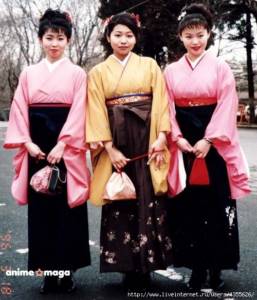
Nowadays, the Japanese protect themselves from the cold by wearing warm underwear under their outerwear, all possible types of which are stocked in local stores. However, it seems that to this day there is a fear in people of catching a cold in the lower back, losing both the working capacity of a peasant and the combat readiness of a samurai warrior. The Japanese consider the lower back to be the core of the human body, the focus of its deep energy. It is not for nothing that in Japanese karate wrestling, blows are not delivered backhand, but as if on the sly, from the center, from the waist. In all local national sports, the lower back is nurtured and strengthened with special exercises. And of course, they wrap it up carefully so as not to catch a cold. Every morning, Japanese men of older and middle generations, and sometimes extravagant youth, wrap their lower back with a special warm flesh-colored belt fastened with buttons. It not only covers the sacrum, it reaches the middle of the chest. This is a purely Japanese invention, not used anywhere else in the world. This belt probably goes back to the loincloth, an important element of national Japanese clothing. In the Middle Ages, there was a special type of loincloth, wound in many turns up to the chest. Noble samurai wore their combat kimonos on top. Apparently, the current Japanese belly belt originated from medieval underwear. And in a kimono, the belt is of great importance. It not only insulates the robe in case of cold, but also serves as its most important decoration. For example, a women's obi belt. Wide, also reaching to the chest, supporting it and shining with smooth silk, you will not see a single fold on it, because it is stretched on a hard cardboard base. At the back, above the waist, the “obi” is folded into a large decorative knot in the form of a box. In Japan, there are several ways to tie such a belt. There are even special circles and schools of its elegant origins, and Japanese women, not too burdened by the hardships of everyday life, spend long hours in them, training in this complex matter, drinking green tea, discussing details with friends, and at the same time all other issues, those that came to mind... In order to prevent the “obi” from moving to the side when walking or when the owner of the kimono sits on the floor, the belt is also intercepted from above with a braided cord, tied with a strong sailor’s knot at the lower back.
The belt of a man's kimono is tied on the side without any extra fuss. Sometimes, however, its knot is placed at the back, like for women, on the kimono of boys and teenagers, and even then only on holidays. Looking at the boys running in their light kimonos with fluttering hems through the streets of Tokyo, you are surprised at how their belts, tied on the back with a lush bow, do not diverge. Sometimes there is even a fan stuck into such a bow, which for some reason does not fall out while running. Of course, they didn’t tie the elaborate bows themselves. Their grandmothers and mothers did this, but strangely: for some reason they did not force their grandchildren and sons to wear tights or long johns under their kimonos. Despite any frost, their legs remain bare.
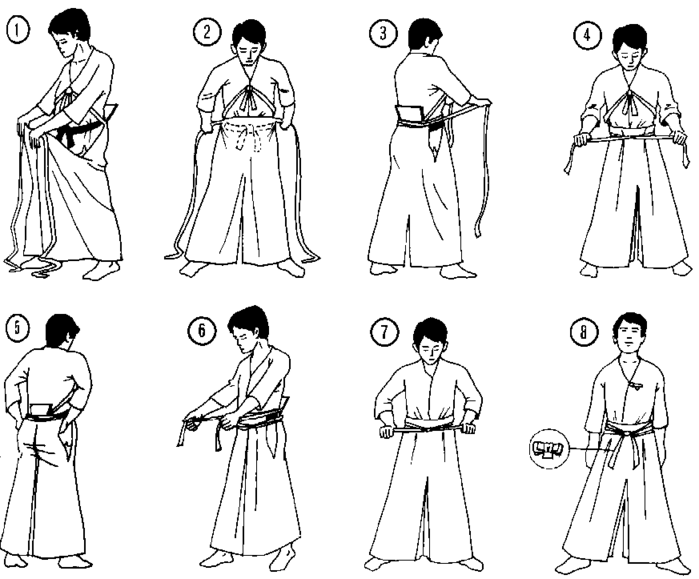
The belts on the kimonos of adult men are narrow and dark, like the robes themselves. Nowadays you no longer see the patterned men's belts that Japanese dandies of the late nineteenth century sported, although it is from its name - “sin” - that the Japanese word for “gentleman” comes from “blue”, which literally translates as: “gentleman with a patterned belt”...
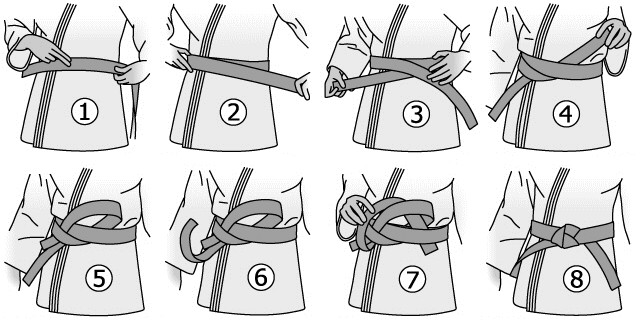
Japanese wedding kimono
The traditional white Japanese wedding kimono is called shiro-maku. Shiro means white and maku means flawless (immaculate). A wedding kimono actually includes two different kimonos, a white one worn for the wedding ceremony and a colored silk one called uchikake worn for the wedding reception. The bright and colorful uchikake kimono dates back to the Edo era and was originally worn by nobles. The kimono is made of silk and decorated with nature-themed embroidery, flowers, pine branches and cranes. While red is the most popular color for uchikake kimonos, other colors are also possible, from purple to sea green. Sometimes the wedding kimono is later used by the family as a bedspread or sheet. Traditionally in Japanese weddings, the bride should have a special hairstyle called bunkin-takashimada, decorated with a gold comb and special accessories, kanzashi. The white wedding hat is called a tsuno kakushi, and is designed to hide the golden tsuno (horns) during the wedding ceremony, symbolizing submission. Traditional wedding accessories for the bride are also a small bag-purse and a small sword in a sheath, and of course a fan, which, according to tradition, is worn behind the obi belt and gradually opens; the open fan symbolizes happiness.
Today, on the streets of Tokyo, Japanese women in kimonos are extremely rare. In modern Japan, traditional clothing is in demand only on national holidays, weddings, official meetings and receptions, New Year or funerals, and graduation from school or university. Women wear kimonos when taking part in a tea ceremony or ikebana arrangement. In addition, the kimono is casual wear for women professionally employed in traditional fields: geishas, actresses in national theaters, and those who work in ryokan hotels and Japanese-style entertainment venues. In almost all Japanese hotels, guests are given a kimono along with bed linen. In a Japanese resort town, by the design of a kimono you can determine which hotel a particular tourist is staying at. The attractive power of a kimono lies in its unique silhouette and the beauty of shimmering fabrics. The simplicity of the kimono cut is adjacent to the fantastic complexity of the patterns, the strict rules of dressing are combined with exquisite picturesqueness, and the static form is combined with the dynamism of flying sleeves. No country can boast such a magical national costume as Japan.
And in the end I want to offer two kimono patterns. Based on them, you yourself can create this wonderful outfit for yourself or your loved ones. Basic pattern for various Japanese clothes. There are materials on the Internet, but there is never too much to understand how to sew a kimono. To buy fabric, measure the desired length and multiply by two. (The simplest example is a yukata, the length is measured from the shoulder to almost the floor. Heian clothes spread along the floor, in Sengoku there was a small overlap at the waist, modern ones have a fold protruding from under the obi - common sense will tell you how much to add.) All sizes are given in centimeters. The extensions are positioned so that the pattern on the floors matches. The panels on the pattern can be swapped if the pattern is adjusted on the back. The layout is as rational as possible: two long stripes are a collar and a technical belt. The sleeve length in the example is kimono length/2 (70 cm). If you need it longer, take it into account when purchasing. Brief instructions for sewing a yukata - a light summer kimono. The version without lining can be sewn in three hours! All other types of Japanese women's dresses can be obtained by changing the length of the hem and sleeves. In addition, in most kimonos, the sleeve is sewn into the armhole only in the upper part, leaving “ventilation” from the armpit almost to the waist. I won’t touch on this detail; it’s useless for a first experience. Yukata is best sewn from thick cotton with a small ornament. The procedure is as follows: (0. In my pattern, the extension is cut together with the shelf - this allows you to perfectly combine the pattern. For historicity, the extension must be folded over the face and a line of 0.5 cm is sewn.) 1. Baste the two halves of the back and sew. 2. Baste and stitch the sides, leaving 25 cm for the armhole. 3. Fold each sleeve in half. Draw a rounded corner with chalk, sweep, stitch, leaving a hole for the brush. 4. Place sleeves into armholes and stitch. 5. Fold the cuff of the sleeve (hole for the hand) and the hole - the pocket facing the body. 6. Fold the bottom. 7. Fold the vertical sections on the floors. 9. Fold one edge of the collar. 10. Baste the collar right side onto the right side of the garment, starting from the finished edge. Cut off the excess, fold the second edge, stitch. 11. Fold the collar in half and hide the allowance in it. Fold the edge over and baste into the seam (so that there is no stitching left on the front side). Sew. If the kimono has a lining, then cut out the same parts and perform steps 1-4 for the top and lining. Then they need to be nested inside each other, and in steps 5-7 instead of “bend” read “connect the parts of the top and lining.” The collar does not need lining. The belt for such a kimono is not the longest, but still: 40 cm by 2 meters.
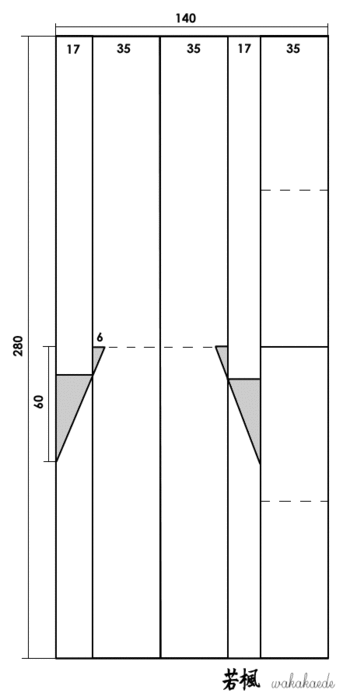
And another one :
In preparing the publication, materials from the article “Kimono” by R. Kirsanova M., 1988, were used.
https://www.povedai.info/authors/EA2011/publication/474/
https://miuki.info/2010/11/kimono-dlya-gejshi-i-majko/#more-5233
https://miuki.info/2010/11/tomesode-kimono-zamuzhnej-zhenshhiny/#more-5093
Series of messages “FOLK COSTUME”:
Part 1 - KIMONO Part 2 - Kokoshnik is a symbol of the Russian national headdress. Part 3 - Russian costume in photographs by Dmitry Davydov... Part 46 - Women's costume of unprecedented beauty Part 47 - How in Rus' they distinguished a girl from her husband's wife Part 48 - A soldier with a pattern. Presentation. Author Svetlana Khachina
Wedding ceremony
In the photo of a Japanese wedding you can see that the wedding takes place according to all the ancient rules. The ceremony is performed in a traditional Shinto shrine by the chief worshiper. The bride enters the temple first, followed by the groom. A small number of guests are allowed. These could be parents and closest friends.
The newlyweds lay branches of the sacred sakaki tree at the altar, followed by the tradition of exchanging rings three times and ceremoniously drinking small sips of sake. A special feature of a Japanese wedding is the mutual pronouncement of vows in front of each other.
Unfortunately, today fewer and fewer newlyweds resort to getting married in churches. They are limited only to the official ceremony at the places of state registration.
Celebration
After a religious wedding, Japanese wedding traditions include a magnificent banquet. All relatives, work colleagues, and friends are invited to attend. The average number of all guests is 80 people.
Sake and wedding cake are a must on the festive table. It is not customary to dance here and there is no host familiar to Russian people; toasts are pronounced according to a clear schedule drawn up in advance. However, after the end of the official part of the banquet, Japanese youth do not mind having fun and singing karaoke.
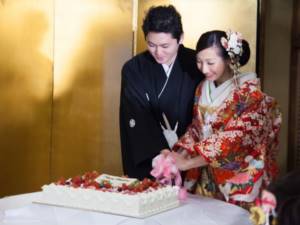
Christian wedding and others
In the modern world, there are often Japanese men and Japanese women who profess Christianity and are Catholics. They perform a classic wedding ceremony in the temple. The costumes are also chosen to be European. This is a classic wedding dress, veil for the bride, black suit for the groom.
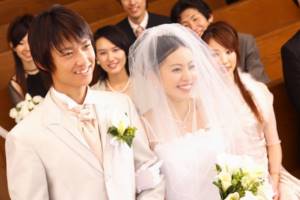
There are also representatives of other religions, as well as atheists, who choose a European-style wedding ceremony only because of its visual appeal. In this case, the ceremony is performed not by a priest, but by a disguised employee of the agency that organizes the celebration. The fashion for such rituals appeared in the 1980s, after the wedding of Prince Charles and Lady Diana.
Style Features
The Japanese bride's outfit is characterized by laconic, soft lines. A light, flowing material is used, preferably silk. Distinctive cut details:
– straight silhouette,
– wide sleeves,
- stand collar,
- wide belt.
The dress is usually long and always covers the knees. The choice of color is not limited; red, pink, blue, yellow, lilac, and black are common colors.
The dress is decorated with various ornaments and designs. The dominant theme is floral (blooming buds, branches of flowering trees), bird figures (peacocks, cranes). Fine embroidery in gold or silver is often used for decoration.
KNOWLEDGE BASE: Indian style wedding dresses - luxurious and feminine
Fans, umbrellas, and flowers are appropriate as accessories.




